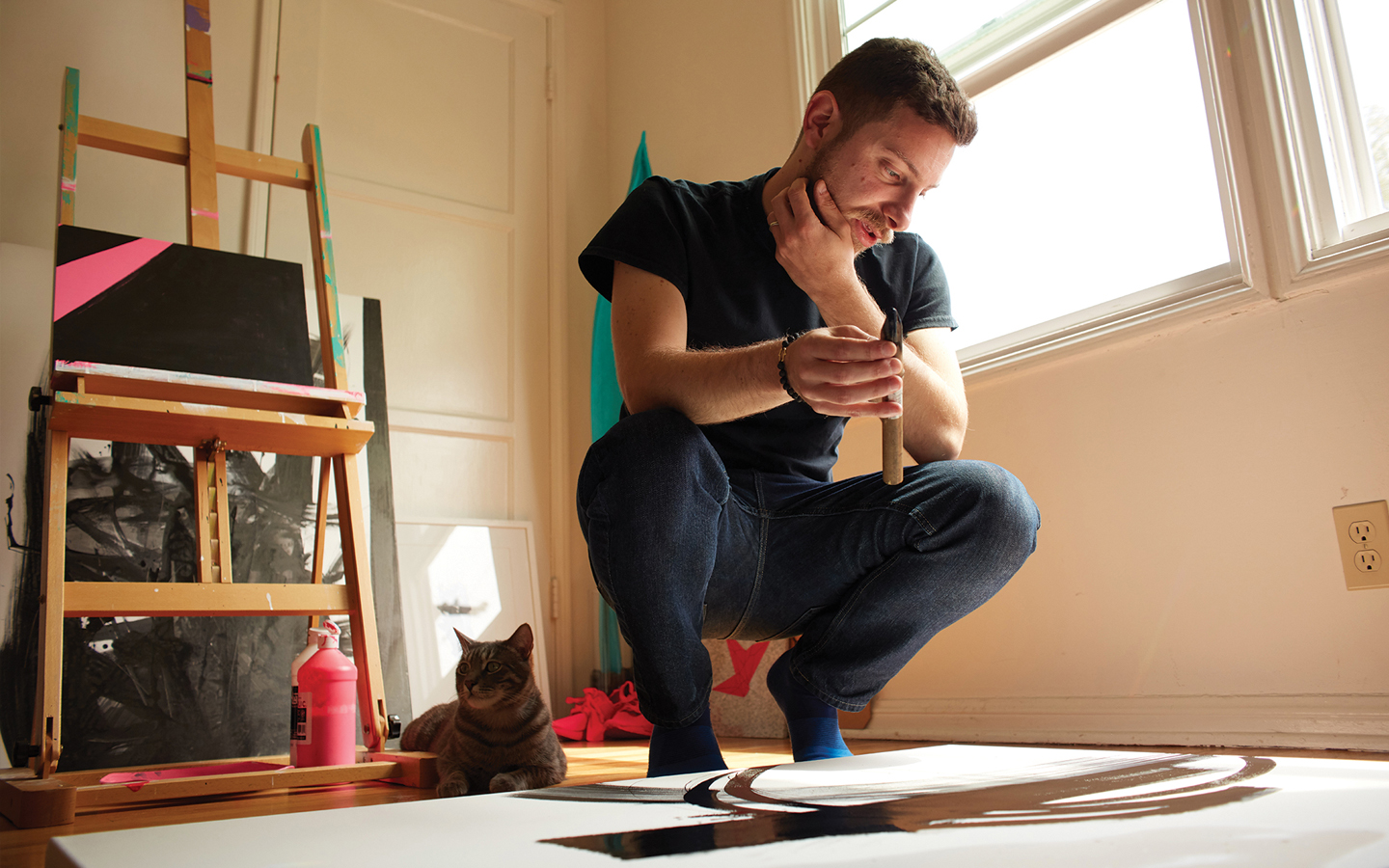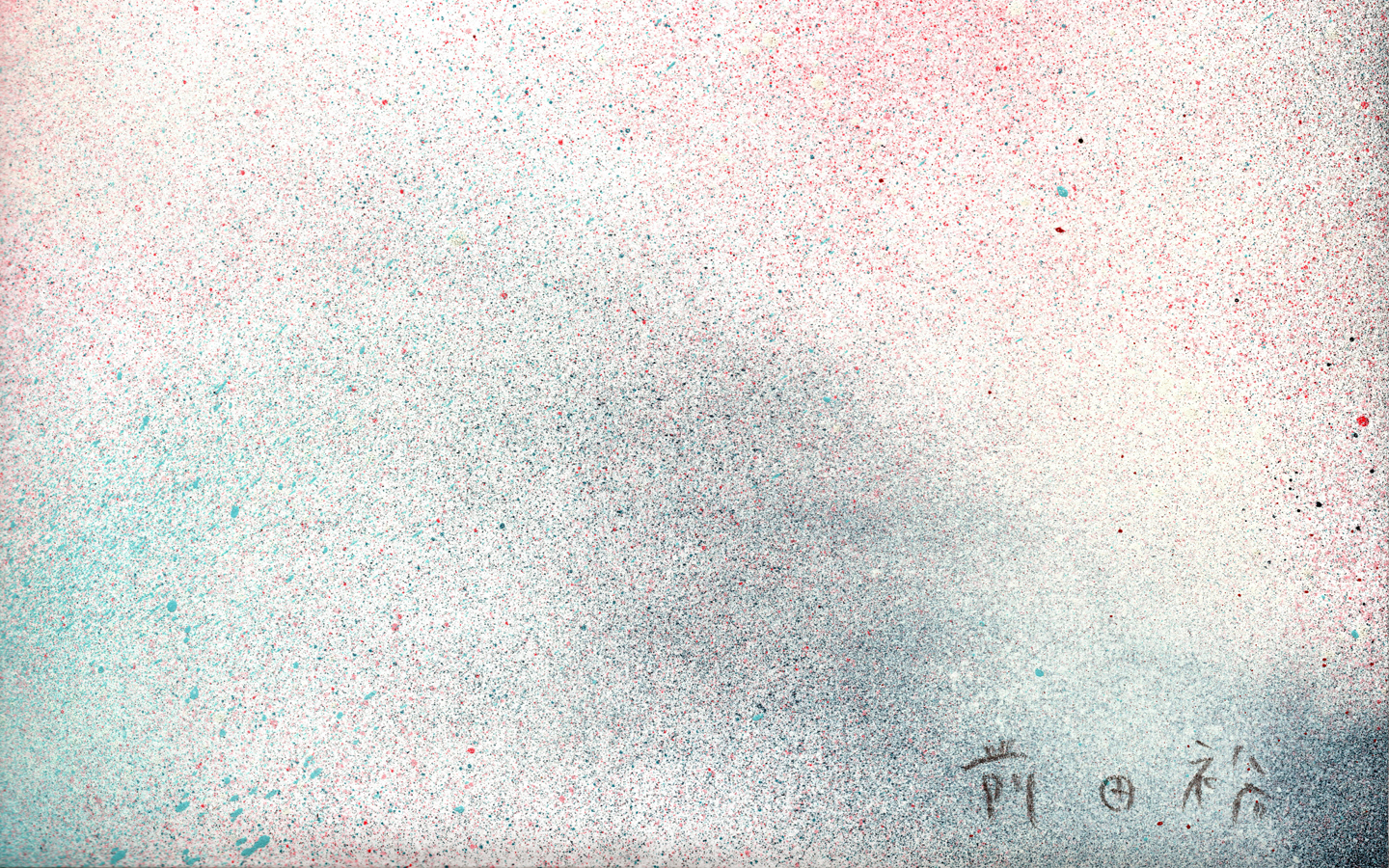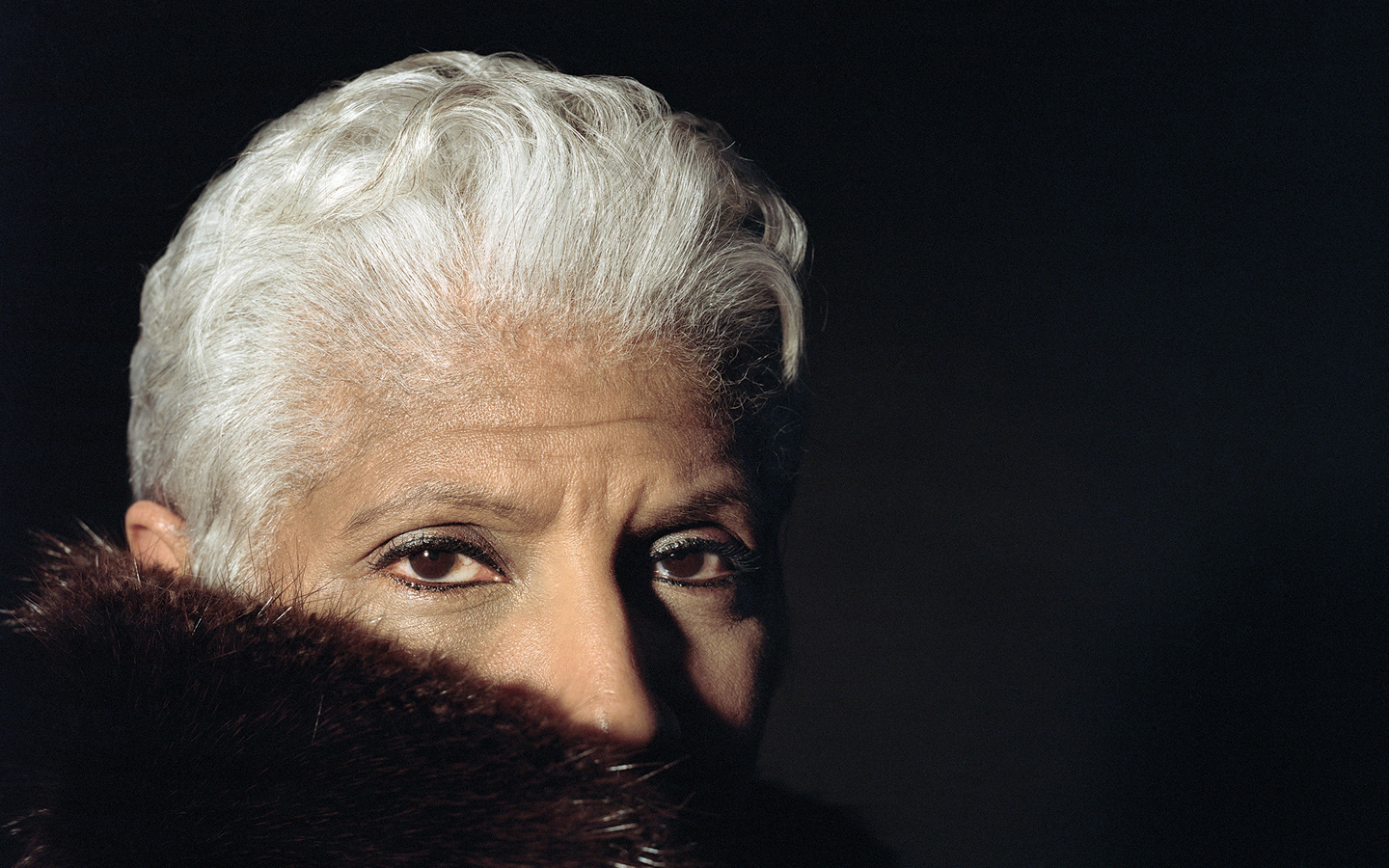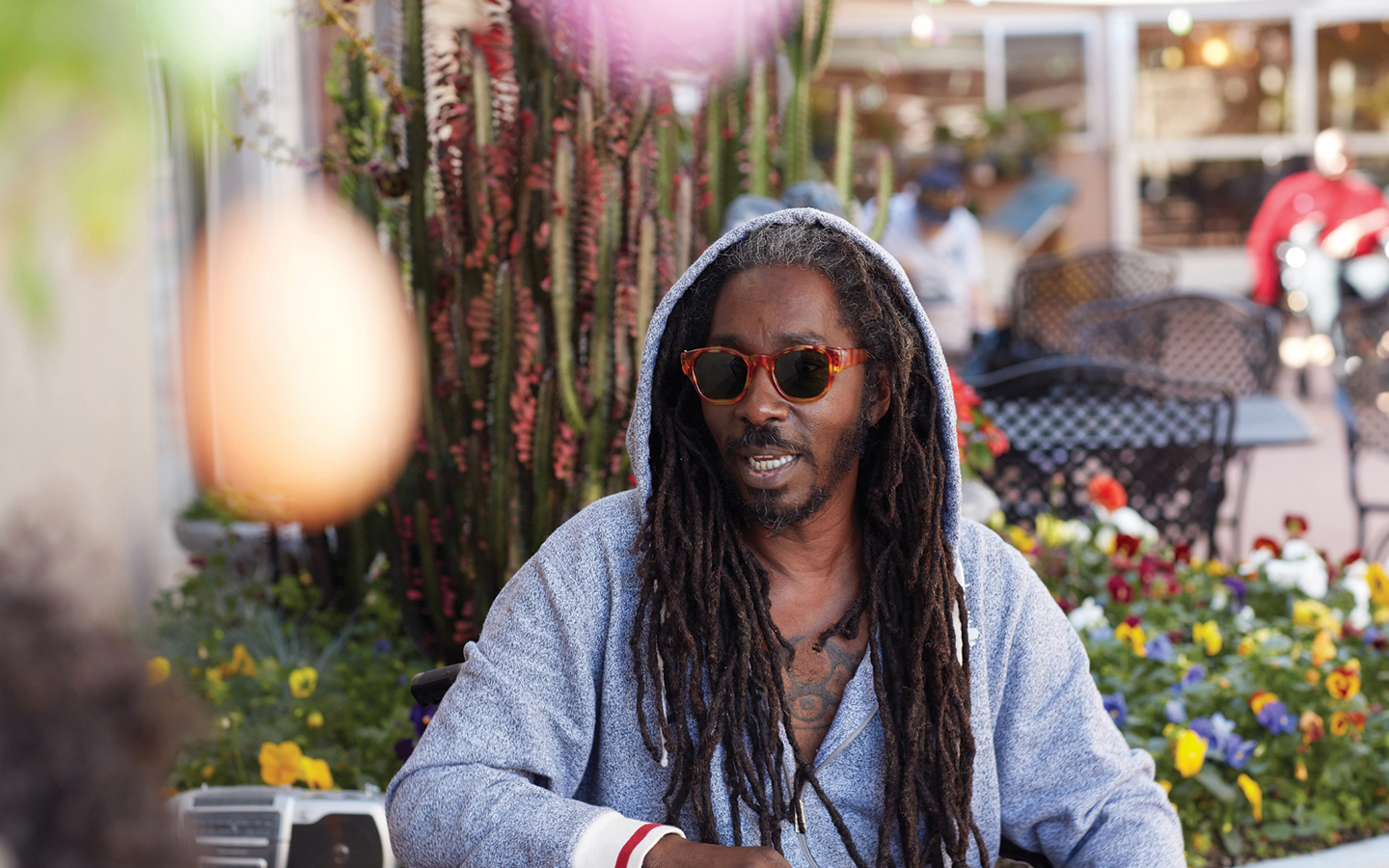
Gianfranco Cioffi
TEXT GENIE DAVIS
VISUAL MEENO
Art is a universal language: this is an aphorism that contemporary painter Gianfranco Cioffi lives by. Born and raised in Italy, Cioffi now lives and thrives in Los Angeles. The prolific artist has exhibited a series of gallery shows in both the U.S. and Europe, while also working as a respected illustrator and art director. Fluent in Italian and English, his intense yet ethereal artwork has wide appeal on both sides of the Atlantic, with a dreamy and compelling quality that goes beyond words.
Cioffi works with calligraphy pens and brushes, bamboo sticks, pastels, Sumi ink and watercolor. His fluid strokes seem to be created of air, cloud and water; they are filled with motion and the innate joy of nature. He describes his work as capturing a “precious moment in time,” and indeed there is the quality of timelessness in his pieces, which seem to exist outside of conventional form and understanding.
His works invite the viewer into a deep emotional space, which activates “hidden and sometimes forgotten memories.” His images have a sinuous, soft quality that belies a sense of swirling emotion, or as Cioffi says “the turbulence inside of us.”
Exhibiting in Paris, Italy, and here in California, Cioffi recently mounted local shows from Art Share LA in DTLA to ShockBoxx in Hermosa Beach, the Brand Library and Art Center in Glendale, and the FM Fine Art Gallery in Mid-City. Most recent was the April solo show created in conjunction with SOVO// Magazine at Substrate Gallery on Melrose Avenue, which Cioffi terms himself enormously grateful for the support of. “That means a lot, my first solo show,” he says.
Cioffi has created two primary bodies of work. The first was How We Look, which reveals the secret side of human beings and one’s relationship with oneself. The series utilizes both portraits and self-portraits, inviting viewers into a visual space he hopes will activate discarded, hidden or forgotten memories.
In his second series, Gordian Knot, Cioffi works to reveal hidden feelings that affect choices and block a full acceptance of one’s self. The name references the legend of Phrygian Gordium, and the metaphor of the knot is used to define an impossible problem that can be solved simply by thinking outside the box of convention and self-perpetuating patterns.
Works from his large-scale Gordian Knot project were culled by the artist for his exhibition for SOVO//, 21. The selection of 21 pieces involved a rigorous effort by the artist in planning the exhibition. “The number 21 is a powerful cabalistic number, a magical number,” he attests. The show was even held on the 21st of April. Cioffi created the works with Sumi ink on handmade 12”x17” Bhutan paper.
The motion-filled works are a true dance of light and shadow, simple and rigorously profound. To some extent, they remind the viewer of visual Haiku – according to Cioffi, that perception is not incorrect.
“Lately I’ve been reading a lot about Wabi-sabi philosophy, and it is fascinating how deep it can go,” he explains.
For the uninitiated, Wabi-sabi is an ancient philosophy with roots in such Zen Buddhist traditions as tea ceremonies. Such ceremonies feature unique, treasured, and handmade bowls, which are often shaped irregularly with uneven glazes and cracks. Wabi-sabi focuses on an acceptance of the transience of beauty and the imperfection of life itself, reflected in the irregularity of the bowls. The Wabi-sabi aesthetic often depicts things that are beautiful, yet imperfect, incomplete, and impermanent. Many of Cioffi’s works strive to incorporate a similarly ethereal sense of beauty.
Despite his adherence to the values of Wabi-sabi, with its graceful retreat from the confines of permanence, when asked about what work he’s created that he finds most memorable, Cioffi references a self-portrait from his How We Look series. “It is large-size on a handmade Japanese paper with Sumi ink. The drawing, the balance of black and white, the composition, everything is natural and harmonious. But what makes it special is the paper; it was my first time using such a high-quality paper. The fact that the man who used to produce the paper passed away a couple of years ago and no one else in Japan is able to reproduce such quality, gives an extra value to the painting and an aura of iconic importance for me,” Cioffi states.
As an artist, Cioffi says his overriding message is “related to the dualism that every human being has to face, the ongoing fight between darkness and light, and analyzing themes like the acceptance of the inevitable.”
Cioffi then and now tries to open new scenes with his art, and create new worlds. Many worlds are within the viewer rather than external landscapes. “Everything that happens in my work is not casual, it has a purpose. Every spot, every detail speaks to the turbulence inside of us.”
His Untitled #1 is a poignant example of such turbulence. The sweeping image is both wavering and bold, carried by the winds of emotion. The piece could be a dancer in mid-leap, or a flag flying in the wind. The broad brush-strokes of The Journey, from his Gordian Knot series, paint another example. Here we find a tangle of roads, a map of sorts, that leads into the heart and mind. From certain angles, the image looks like a dragon with talons, but from others it appears as a small, feeble creature inching along a branch, mirroring the duality we all wrestle with.
We all experience inner turbulence, but it’s a different experience for each of us, which is one of the most magical things about Cioffi’s work. Its elusive meanings are open to the interpretation of the viewer, like a Rorschach test for the soul.
You may also like
Index Issue 2
Engineers who are also video installation artists, musicians who have PhDs in Molecular Chemistry an
Charmaine Jefferson
As an activist, arts champion, lawyer, administrator, wife and mother, Charmaine Jefferson is right
Eve Kemp
“This metal thing was hurling down upon me, so I became metal too and hurtled back.”




